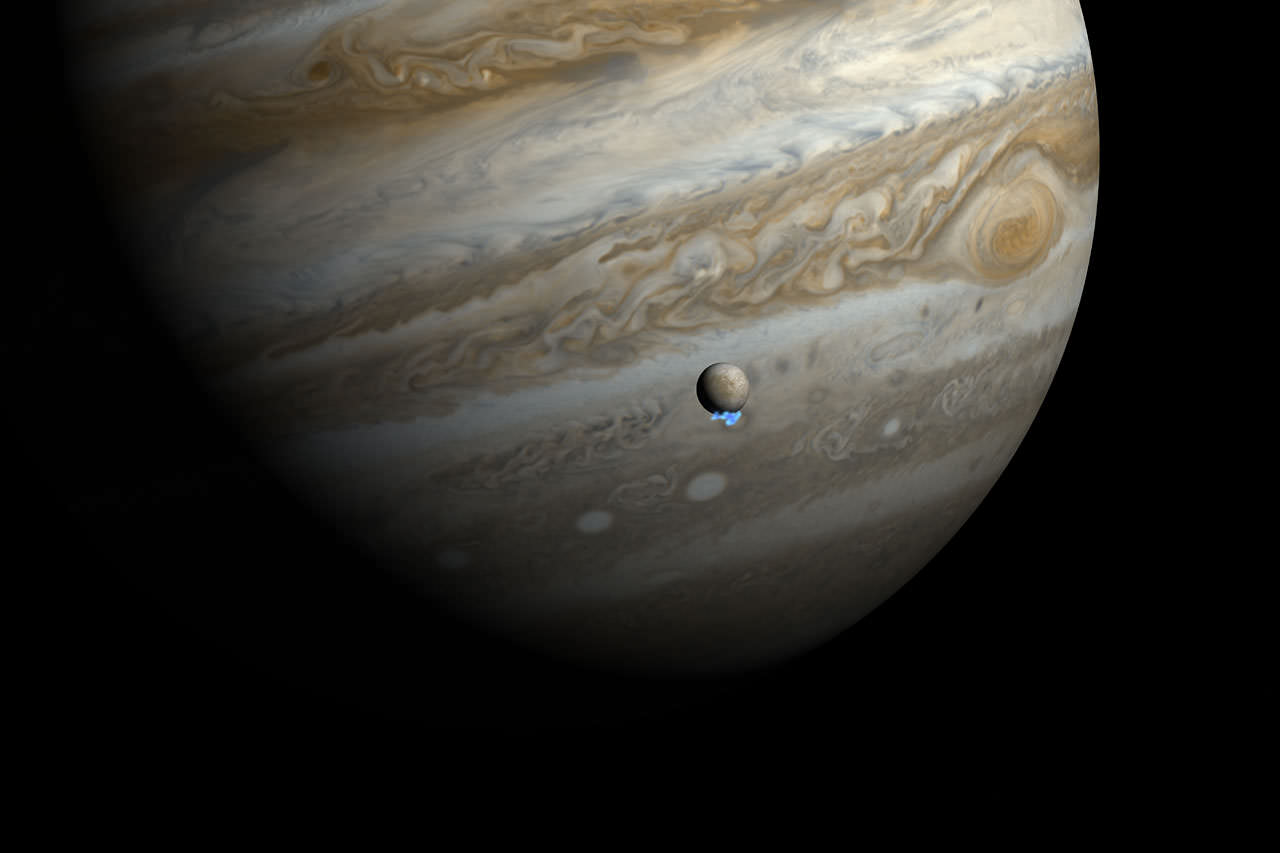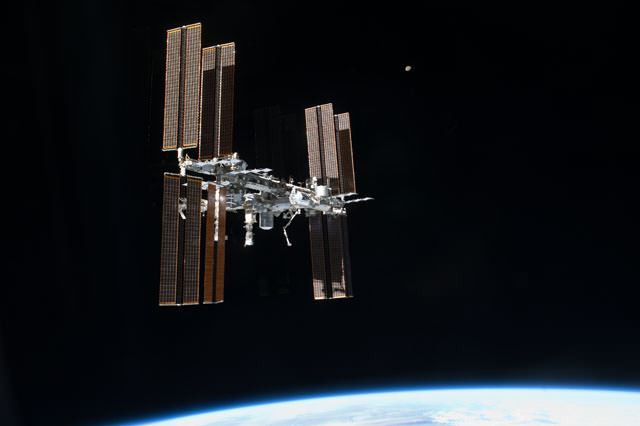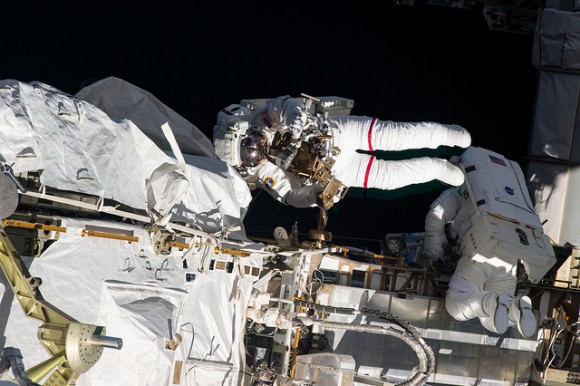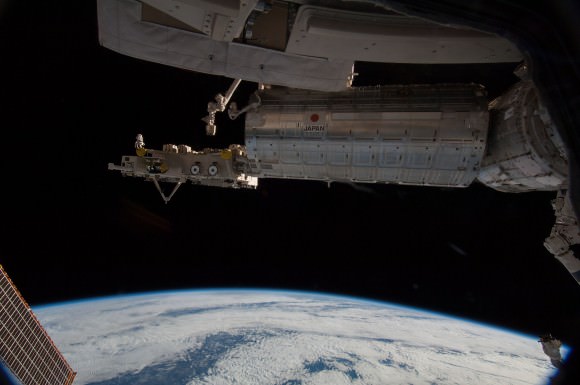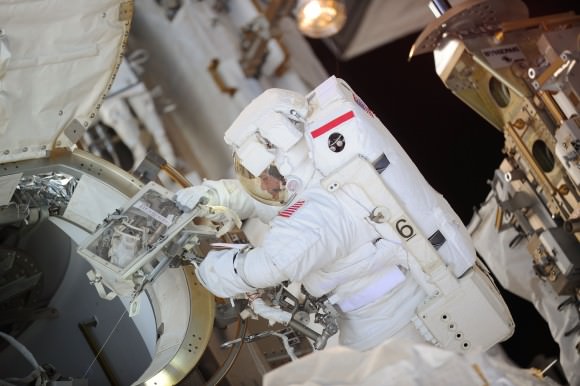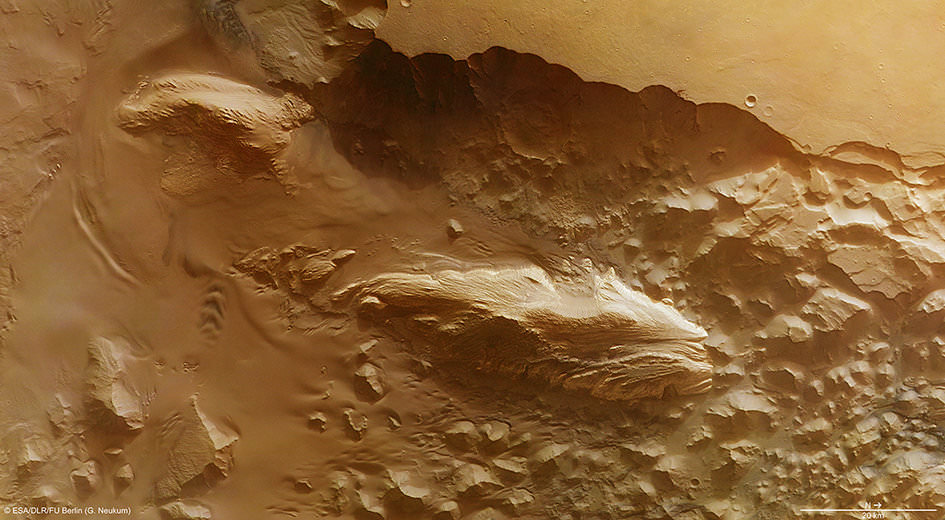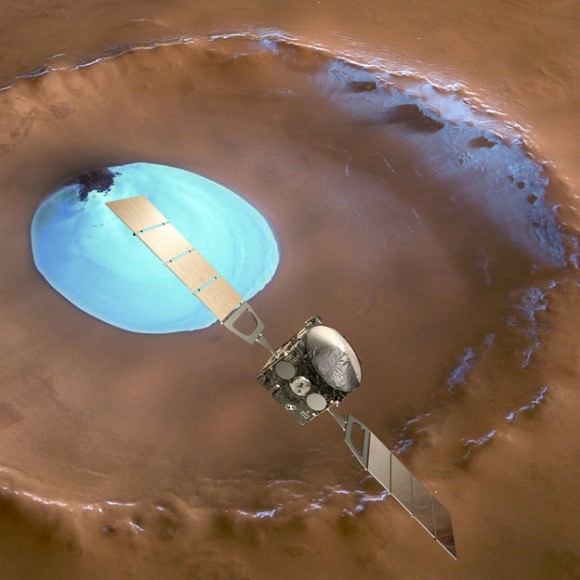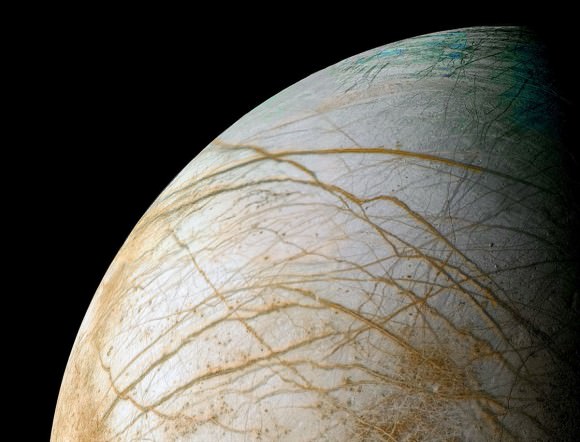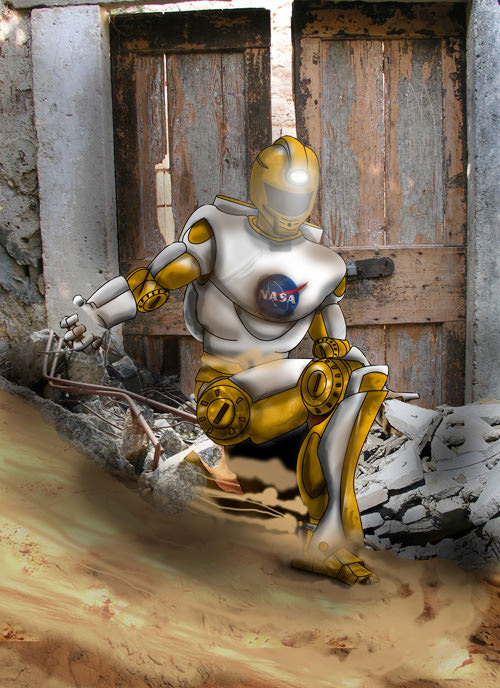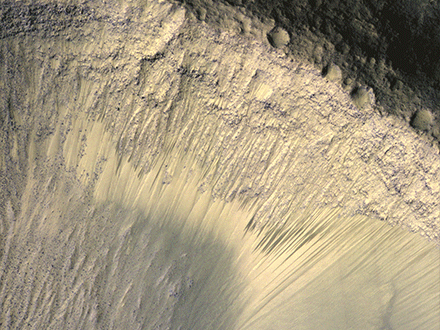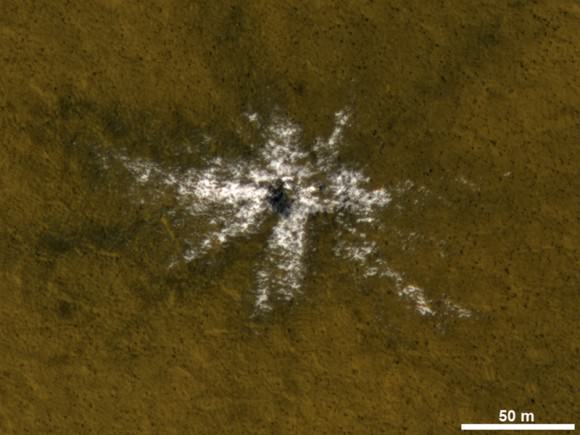It’s been known since 2005 that Saturn’s 300-mile-wide moon Enceladus has geysers spewing ice and dust out into orbit from deep troughs that rake across its south pole. Now, thanks to the Hubble Space Telescope (after 23 years still going strong) we know of another moon with similar jets: Europa, the ever-enigmatic ice-shelled moon of Jupiter. This makes two places in our Solar System where subsurface oceans could be getting sprayed directly into space — and within easy reach of any passing spacecraft.
(Psst, NASA… hint hint.)
The findings were announced today during the meeting of the American Geophysical Union in San Francisco.
“The discovery that water vapor is ejected near the south pole strengthens Europa’s position as the top candidate for potential habitability,” said lead author Lorenz Roth of the Southwest Research Institute (SwRI) in San Antonio, Texas. “However, we do not know yet if these plumes are connected to subsurface liquid water or not.”
The 125-mile (200-km) -high plumes were discovered with Hubble observations made in December 2012. Hubble’s Space Telescope Imaging Spectrograph (STIS) detected faint ultraviolet light from an aurora at the Europa’s south pole. Europa’s aurora is created as it plows through Jupiter’s intense magnetic field, which causes particles to reach such high speeds that they can split the water molecules in the plume when they hit them. The resulting oxygen and hydrogen ions revealed themselves to Hubble with their specific colors.
Unlike the jets on Enceladus, which contain ice and dust particles, only water has so far been identified in Europa’s plumes. (Source)
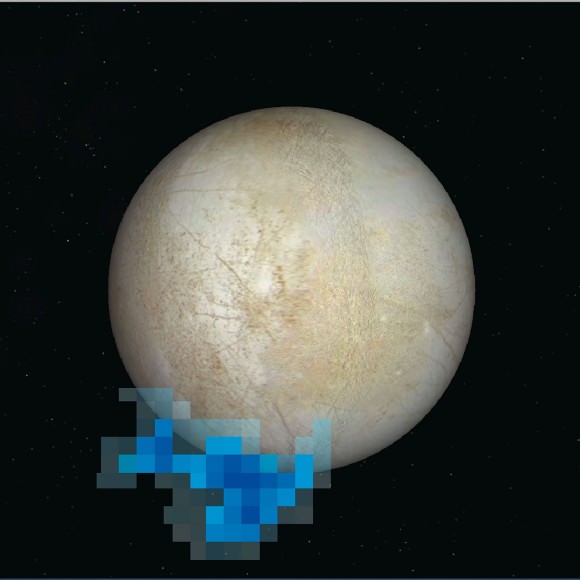
The team suspects that the source of the water is Europa’s long-hypothesized subsurface ocean, which could contain even more water than is found across the entire surface of our planet.
Read more: Europa’s Hidden Great Lakes May Harbor Life
“If those plumes are connected with the subsurface water ocean we are confident exists under Europa’s crust, then this means that future investigations can directly investigate the chemical makeup of Europa’s potentially habitable environment without drilling through layers of ice,” Roth said. “And that is tremendously exciting.”
One other possible source of the water vapor could be surface ice, heated through friction.
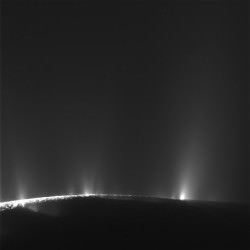
In addition the Hubble team found that the intensity of Europa’s plumes, like those of Enceladus, varies with the moon’s orbital position around Jupiter. Active jets have been seen only when Europa is farthest from Jupiter. But the researchers could not detect any sign of venting when Europa is closer.
One explanation for the variability is Europa undergoes more tidal flexing as gravitational forces push and pull on the moon, opening vents at larger distances from Jupiter. The vents get narrowed or even seal off entirely when the moon is closest to Jupiter.
Still, the observation of these plumes — as well as their varying intensity — only serves to further support the existence of Europa’s ocean.
“The apparent plume variability supports a key prediction that Europa should tidally flex by a significant amount if it has a subsurface ocean,” said Kurt Retherford, also of SwRI.
(Science buzzkill alert: although exciting, further observations will be needed to confirm these findings. “This is a 4 sigma detection, so a small uncertainly that the signal is just noise in the instruments,” noted Roth.)
“If confirmed, this new observation once again shows the power of the Hubble Space Telescope to explore and opens a new chapter in our search for potentially habitable environments in our solar system.”
– John Grunsfeld, NASA’s Associate Administrator for Science
Read more: Hydrogen Peroxide Could Feed Life on Europa
So. Who’s up for a mission to Europa now? (And unfortunately in this case, Juno doesn’t count.)
“Juno is a spinning spacecraft that will fly close to Jupiter, and won’t be studying Europa,” Kurt Retherford told Universe Today. “The team is looking hard how we can optimize, maybe looking for gases coming off Europa and look at how the plasma interacts with environment, so we really need a dedicated Europa mission.”
We couldn’t agree more.
The findings were published in the Dec. 12 online issue of Science Express.
Sources: Hubble news releases (US and ESA)
Image credits:
Graphic Credit: NASA, ESA, and L. Roth (Southwest Research Institute and University of Cologne, Germany)
Science Credit: NASA, ESA, L. Roth (Southwest Research Institute and University of Cologne, Germany), J. Saur (University of Cologne, Germany), K. Retherford (Southwest Research Institute), D. Strobel and P. Feldman (Johns Hopkins University), M. McGrath (Marshall Space Flight Center), and F. Nimmo (University of California, Santa Cruz)

